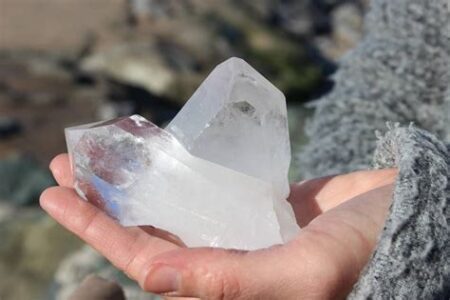Introduction
Black rutile is an enigmatic and extraordinary mineral that has captivated scientists and lapidaries alike for centuries. Its distinct jet-black color, unparalleled optical properties, and potential applications in various industries make it a highly sought-after gemstone. This comprehensive article explores the fascinating world of black rutile, uncovering its unique characteristics, potential uses, and the latest advancements in its research and applications.

Physical Properties
Black rutile is an opaque mineral with a Mohs hardness of 6-6.5, making it relatively hard and resistant to scratching. Its chemical composition is titanium dioxide (TiO2), the same as other rutile varieties. However, impurities, such as iron and vanadium, contribute to its distinctive black color.
Optical Properties
Black rutile exhibits exceptional optical properties that set it apart from other gemstones. It has an extremely high refractive index, ranging from 2.583 to 2.903, resulting in a brilliant luster and intense sparkle. Additionally, black rutile exhibits strong birefringence, causing a significant splitting of light rays passing through it, leading to a play-of-color effect known as aventurescence.
Crystal Structure
Black rutile occurs in tetragonal crystals with a needle-like or acicular habit. These crystals often form intergrowths, creating intricate and visually stunning patterns. The unique crystal structure of black rutile contributes to its exceptional optical properties and makes it an ideal gemstone for cabochon cutting.
Applications
The potential applications of black rutile extend beyond its use as a gemstone. Its unique properties have sparked interest in various industries, including:
Jewelry
Black rutile is a popular gemstone used in jewelry making. Its deep black color, exceptional luster, and aventurescence make it a striking and elegant choice for rings, pendants, and earrings.
Optoelectronics
The high refractive index and birefringence of black rutile make it an excellent candidate for optoelectronic applications. It is used in the production of high-efficiency solar cells, lasers, and optical filters.
Industrial Coatings
Black rutile’s hardness and chemical stability make it suitable for use in industrial coatings. It is added to paints, ceramics, and other materials to enhance their durability, scratch resistance, and optical properties.
Pigments
The intense black color of black rutile makes it a valuable pigment for use in paints, inks, and dyes. It provides exceptional color depth and opacity, making it a desirable choice for high-end applications.
Health Benefits
While black rutile is not traditionally used for medicinal purposes, scientific studies suggest that it may have potential health benefits.
Antioxidant Properties
Research indicates that black rutile contains titanium dioxide nanoparticles that exhibit antioxidant properties. These nanoparticles can help neutralize free radicals, protecting cells from oxidative damage.
Antimicrobial Effects
Studies have shown that black rutile has antimicrobial activity against various bacteria and fungi. This property may have implications for the development of new antimicrobial agents.
Market Value
The market value of black rutile varies depending on its size, quality, and specific characteristics. High-quality black rutile gems can fetch premiums, while industrial-grade material is typically sold at lower prices.
According to industry estimates, the global market for black rutile gemstones was valued at approximately $50 million in 2021. The demand for black rutile is expected to continue growing due to its unique properties and increasing use in jewelry and other applications.
Extraction and Sustainability
Black rutile is primarily extracted from alluvial deposits formed by the weathering of primary rutile-bearing rocks. Mining operations are conducted in countries such as Australia, Brazil, Sri Lanka, and Tanzania.
Sustainable extraction practices are becoming increasingly important in the mining industry. Mining companies are implementing measures to minimize environmental impact and promote ethical sourcing. Additionally, research efforts are underway to develop alternative sources of black rutile, such as synthetic production methods.
Tips and Tricks
- When selecting black rutile gems for jewelry, look for pieces with a deep black color, high luster, and distinct aventurescence.
- Black rutile is relatively hard but can still be scratched by harder materials. Take care to protect your jewelry from damage.
- Clean black rutile jewelry regularly using a mild soap solution and a soft cloth. Avoid using harsh chemicals or ultrasonic cleaners.
- Explore the use of black rutile in mixed-metal jewelry designs to create unique and visually striking pieces.
Common Mistakes to Avoid
- Avoid using black rutile in jewelry exposed to prolonged sunlight, as it can cause discoloration and damage the gemstone.
- Do not attempt to cut or polish black rutile yourself. It is a hard and brittle material that requires professional expertise.
- Be aware of counterfeit black rutile. Some synthetic materials or other minerals may be misrepresented as black rutile.
Future Prospects
The future of black rutile looks promising with exciting developments emerging in various fields:
Nanotechnology
The unique properties of black rutile nanoparticles have prompted research into their potential applications in nanotechnology. These nanoparticles could be used in advanced materials, sensors, and medical diagnostics.
Alternative Energy
Black rutile’s high refractive index and low optical loss make it a promising material for next-generation solar cells. Research focuses on improving efficiency and reducing production costs.
Healthcare Innovations
The antioxidant and antimicrobial properties of black rutile nanoparticles suggest their potential use in developing new therapeutic agents and medical devices.
Tables
Table 1: Physical Properties of Black Rutile
| Property | Value |
|---|---|
| Chemical Formula | TiO2 |
| Mohs Hardness | 6-6.5 |
| Density | 4.25 g/cm³ |
| Refractive Index | 2.583-2.903 |
| Birefringence | 0.318 |
Table 2: Applications of Black Rutile
| Industry | Application |
|---|---|
| Jewelry | Gemstones, cabochons |
| Optoelectronics | Solar cells, lasers, filters |
| Industrial Coatings | Paints, ceramics |
| Pigments | Inks, dyes |
| Nanomaterials | Advanced materials, sensors |
Table 3: Health Benefits of Black Rutile
| Property | Potential Benefit |
|---|---|
| Antioxidant Properties | Protects cells from oxidative damage |
| Antimicrobial Effects | Inhibits growth of bacteria and fungi |
Table 4: Market Value of Black Rutile
| Grade | Value |
|---|---|
| Gem Quality | $50-$500 per carat |
| Industrial Grade | $10-$50 per kilogram |




























